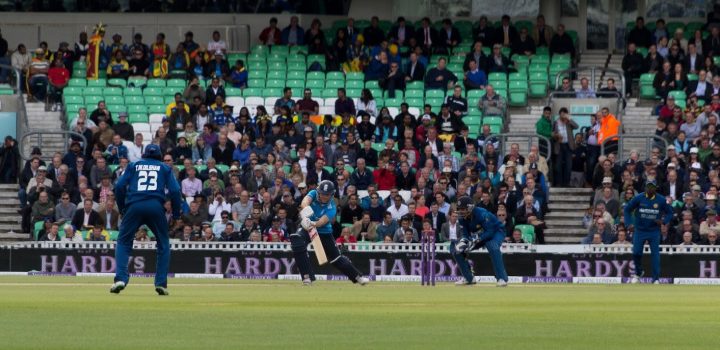
The omission of Nathan Hauritz from Australia’s squad for Brisbane sadly wasn’t a surprise. The press had been talking up Steve Smith (first class average 50) and Xavier Doherty (average 48) ever since Hauritz dared to have a couple of bad matches in India. Admittedly, Hauritz has a similarly underwhelming record in Shield cricket, but his test record is pretty good. And the Aussie selectors have seemingly forgotten that Hauritz performed admirably in 2009, when Australia probably would’ve won the Ashes had Ponting not misread the Oval pitch. History has therefore taught the Aussies nothing.
Rumour has it that Doherty might make his debut at the Gabba because Kevin Pietersen’s technique goes to jelly when facing left arm spin. So what? Pietersen has made little impact on this tour thus far, and he made little impact in the Ashes last year – which Australia still lost. Furthermore, KP still averages over 40 against test attacks that include at least one left arm spinner.
Had the Aussies done their homework, they’d have remembered the aggravation Hauritz caused all England’s batsmen in 2009 – not least Strauss, who succumbed to the off-spinner several times in the post-Ashes ODIs. Strauss was England’s man of the series last summer, and he’s likely to be our key man this time round too. Therefore, the decision to jettison a proven performer like Hauritz in the hope that an inexperienced left-armer might keep Pietersen quiet defies logic.
Unfortunately however, England are just as guilty of ignoring history. I’m referring, of course, to the likely balance of the side in Brisbane. What have England ever won with a four man attack? The answer is absolutely nothing – except a couple of victories against world cricket’s weaker nations. We’ve even lost to the West Indies away from home.
The best result England have achieved with four bowlers in recent years is the drawn series in South Africa last winter which we would have lost 1-3 had it not been for Graham Onion’s heroics with the bat. What have we won with five bowlers? I’ll tell you what – the Ashes, twice.
England’s decision to revert to four bowlers under Strauss and Flower is born of pure conservatism. They’ve discarded history, and the advice of former skipper Michael Vaughan (and Andrew Flintoff), to pursue a selection strategy that doesn’t trust our top order to get the job done. They’re also forgetting that our lower order is one of the strongest we’ve ever had. How many times has the tail bailed out the team in recent years, regardless of how many specialist batsmen we played?
The retirement of Flintoff has often been given as the reason for England’s conservative selection. The argument goes that England have no choice (i.e. we simply have to play four bowlers) because we’ve got nobody capable of batting seven. But again, who cares? Prior is a more than capable number six, and the selection of a slightly weak seven, probably Bresnan, with a strong eight and nine to follow (Broad and Swann) is an insignificant sacrifice if it enables us to play five bowlers. Flintoff rarely made significant contributions with the bat after 2005 any way, so would the batting really be that much weaker?
The selection of a four man attack in back-to-back tests in sweltering heat is more risky than Strauss and Flower admit. Whilst the sixth specialist batsmen may fail to score runs, a fifth bowler will always contribute (unless the pitch is green and the match ends in three days). On Australia’s true pitches, five bowlers will share the workload and enable Broad and Finn to bowl at full pace for longer. The risk of injury is also reduced.
At least Australia, it seems, have heeded the lessons of 2005 and 2009. The decision to select Shane Watson as an opening batsman was partly born of necessity, but they also had an eye on the balance of their side. Realising their attack was outgunned in their Ashes defeats, Watson was asked to work on his bowling and become a proper allrounder. As a result, Watson decided to concentrate on accuracy (rather than trying to bend his back) and he’s now taking important wickets.
When the Ashes start on Wednesday, England will have abandoned their winning formula of 2005 and 2009 in favour of a balance that has failed them almost continuously since the retirement of Ian Botham. Australia, on the other hand, will field a side with plenty of bowling options.
Like politicians, the England and Australian cricket teams seem to have selective memories when it comes to history. Thankfully for England fans, however, the Australians may have missed the most important lesson of them all. Shane Warne might have called the omission of Hauritz ‘dumb’, but he didn’t pinpoint the main reason why. England learned long ago that consistency of selection produces more consistent performances. Perhaps that’s why England, despite their conservatism, still have a great chance of retaining the Ashes.
James Morgan









Five bowlers is obviously preferable, but which batsman would we leave out? Cook might seem like the obvious choice, but this would mean re-jigging the whole top order. Meanwhile, Bell and Collingwood have been in good form in the warm up matches.
I would never advocate dropping KP, but it would be highly amusing if Pietersen was left out now that the Aussies have selected Doherty specifically to get him out!
Does Bresnan offer enough with the ball to justify losing a batsmen? Not sure if he does. The weather has been poor and the Gabba may offer a bit more lateral movement then normal so I say stick with the 4 bowlers.
If the pitch is likely to favour the bowlers, I have no problem with a 4 man attack. We’ll need the extra batsman in those circumstances, and our bowlers aren’t likely to spend long in the field.
The problem comes when it’s a flat track, the weather is hot, and we’re toiling in the field. Finn and Broad etc are good bowlers, but when they’re operating at 81mph because they’re knackered, they aren’t going to take many wickets. Bresnan may not pick up stacks of wickets, but he will reduce the work load on the others, enabling them to operate at full pace and effectiveness. He’s also quite an underrated performer and hits the pitch harder than most observers think. Flintoff has praised his bowling on a number of occasions, and Mark Butcher also thinks he’s under-rated. He certainly looked a threat in the Australia A match, bowled just as well as Tremlett, and would be a useful 4th seamer.
I hope that England adapt their side to the conditions and don’t simply play 4 bowlers through habit, regardless of conditions. Horses for courses I reckon (unless, of course, that involves picking Darren Pattinson!)
If it is a flat track, I would rather see England build scoreboard pressure with 6 batsmen. When the conditions are set up for the batting team, England are more than capable of being 30-3 and with only 5 specialist batsmen, I can’t see England getting to 400. With Bell and Prior 6/7, there is a possibility of always scoring big runs.
I agree with James here. 20 wickets win a test match and I think England have to view Prior as an all rounder. His test record is as good as many of the specialist batsmen and with Bresnan, Broad and Swan the tail is long enough. Also Broad and Finn will need to bowl with pace on flat pitches to take wickets, Bresnan will give them a breather when Jimmy’s not swinging it. England have to be bold to win…
Some good points about the heat and such, but most of the test playing nations of the world have been playing with a four man attack in most games for a long time now. Indeed, Australia’s position of world dominance was built on a four man attack.
The arguments then usually comes that they could afford to, as they had Warne and McGrath, and that for these modern flat pitches you need five bowlers rather than the insurance of an extra batsman. Well what about the current #1 side? India have a four man attack, all of whom are ranked lower than their English equivalents, who play at home on the flattest pitches in world cricket, and have one of the batting line-ups least in need of bolstering with an extra batsman.
So are England unique in needing a fifth bowler?
Totally agree with this post – dont see many of the other top test teams playing a 5th bowler for the sake of it; especially when that player is neither good enough batting or bowling.
The Full Toss team are in slight disagreement over this one. My instinct is our best hope lies in piling up runs on the board, and putting them under scoreboard pressure. Agree that Bresnan is hardly worth sacrificing a proper batsman for. MHA.
I fully understand the arguments in favour of 4 bowlers, but I don’t believe India can claim to the undisputed number one team. There is no outstanding team in international cricket atm. Also, India play 4 bowlers with 2 spinners at home because the conditions allow it. The pitches are responsive to spin, so they’re happy for Singh and Ojha to bowl thirty overs each during the day (supplemented by part time spinners). England don’t have the same luxury in Australia. The seamers can’t bowl all day, and we have few (if any) part time bowlers to fill in. Collingwood is a good ODI bowler, but his record in tests is awful. Meanwhile, KP doesn’t seem to want to bowl, and Trott struggles to reach medium pace. He wouldn’t take wickets for a club team (unless is was against the Allstars!)
I think we have been fooled by English conditions and the 3/4 day tests over the English summer. The nearest equivalent to an Ashes tour down under was our series in South Africa last year. We struggled to take wickets and could/should have lost 1-3.
I also don’t buy the argument that an allrounder batting 7 and bowling as a 4th seamer needs to be world class in both disciplines. It’s all about the balance of the team and doing a job (whilst chipping in with valuable wickets / runs). Brian MacMillan was neither a great batsman nor a potent bowler, but he batted six and made a great contribution to South African cricket. He took the pressure off Donald/Pollock/Matthews and sold his wicket dearly. And what about players like Colin Funky Miller? Hardly a genius, but a vital cog in Australia’s side for a couple of years.
Oh and by the way, Tim Bresnan’s first class bowling average is the same as Flintoffs, and his batting average is only marginally less. Freddy batted six for England. Nobody is asking Bresnan to do that. If Bresnan batted 7, he would have a much more solid tail behind him than Flintoff in 2005. What is stronger? 6.Flintoff, 7.Jones, 8.Giles 9.Hoggard (our team in 2005), or 6.Prior 7.Bresnan 8.Broad 9.Swann? There is no comparison, yet still people want an even stronger batting line up and a weaker attack.
I would definitely stick with 4 bowlers – even though I think Prior is good enough to bat at 6, we don’t have a genuine all-rounder to bat 7. I don’t rate Bresnan at all, he’s a typical bits and pieces player not good enough with either bat or ball for Test cricket and will struggle to take wickets away from English conditions. Think back to all the rubbishy players we fielded in the 90s for the sake of playing an all-rounder (Capel, Pringle, Lewis, White, Ealham etc) -we mustn’t get back into that mentality just so it gets a 5th bowler into the team. We have to rely on our top 6 to get the runs and regard Broad’s and Swann’s batting as a bonus.
So what was Ashely Giles? Test bowling average 41, batting average 21. Did he not contribute to the triumph in 2005? By the logic of some of the posts above, we shouldn’t have picked a spinner back then because we didn’t have one good enough …. Giles would be called a bits and pieces player who offers nothing. You see, it’s all about having the right balance. It’s about a team, not necessarily individuals. In England’s current predicament, we should pick the best all rounder available. He’s the 4th seamer and the 7th batsman. He doesn’t have to win matches on his own.